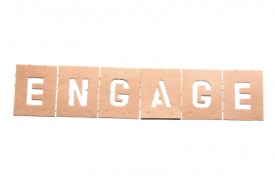
As we all know, the rudimentary elements of language are established at the earliest ages. From a baby’s first months, they instinctively begin listening and forming the neurological groundwork for what will become their abilities to understand language, as well as speak and read.
While there are numerous studies around the topic, I’d like to take you through a simple series of imaginary scenarios to demonstrate the importance of this point—for children as well as for those of us in charge of their learning.
First, imagine the world from the baby’s point of view. They observe, see the shapes and colors around them, and as they do, they hear the voices of their parents, and they begin associating certain sounds with the surrounding world. Now, imagine how the understanding of that process—as a teaching tool in the hands of a conscientious parent—can shape that child’s abilities from the earliest of ages.
Scenario 1: A parent—let’s call her Jane—is walking down the street, slowly because she is holding her young toddler’s hand. Suddenly, a loud siren screams and around the corner comes a gleaming fire engine. Jane quickly points to it, looks into her child’s concerned eyes, smiles and says, "Loud!" As the fire engine goes by, it splashes through a great puddle in the road, spraying the two with water. Jane says, smiling and laughing, "Ohhh, no! Wet! We got wet!" Jane’s child begins to smile and laugh, too.
Scenario 2: Another parent, Carol, has her child in a stroller and is walking at a brisk clip. She is conducting business with the cell phone in one hand and is pushing the stroller with the other. They are enjoying the sunshine, and the child is calmly, quietly watching the world go by. Suddenly, a loud siren screams and around the corner comes a gleaming fire engine. Carol says, "Oh, darn it. Can you hold on a sec?" into her phone. Her child, startled by the loud noise, begins to sob, but Carol doesn’t know it because she’s watching the fire engine pass and can’t hear her child because of the siren. As the fire engine goes by, it splashes through a great puddle in the road, spraying the two with water. Carol, with fury and frustration in her voice, says, "DARN IT! Can I call you back later? I just got soaked." By this time, Carol is genuinely angry and her child is wholeheartedly crying.
In these brief images, with so much playing out in terms of outward attitudes and reactions to circumstances, and we can even look ahead to possible bonding issues. But let’s think specifically about language. What has the child—as well as the parent—in scenario one gained and the child in scenario two lost?
While Carol’s child has witnessed frustration and fear in the face of incoming stimulus, Jane’s child has experienced the world through a comforting, loving, happy interpretive filter. In short, we cannot underestimate the importance of simply being engaged with the children in our lives. As teachers, encouraging the parents we encounter to be as connected and involved in their children’s lives as early as possible.
Related Reading:
The Speech and Language Connection: The Nursery Rhyme Effect (Part 1)

